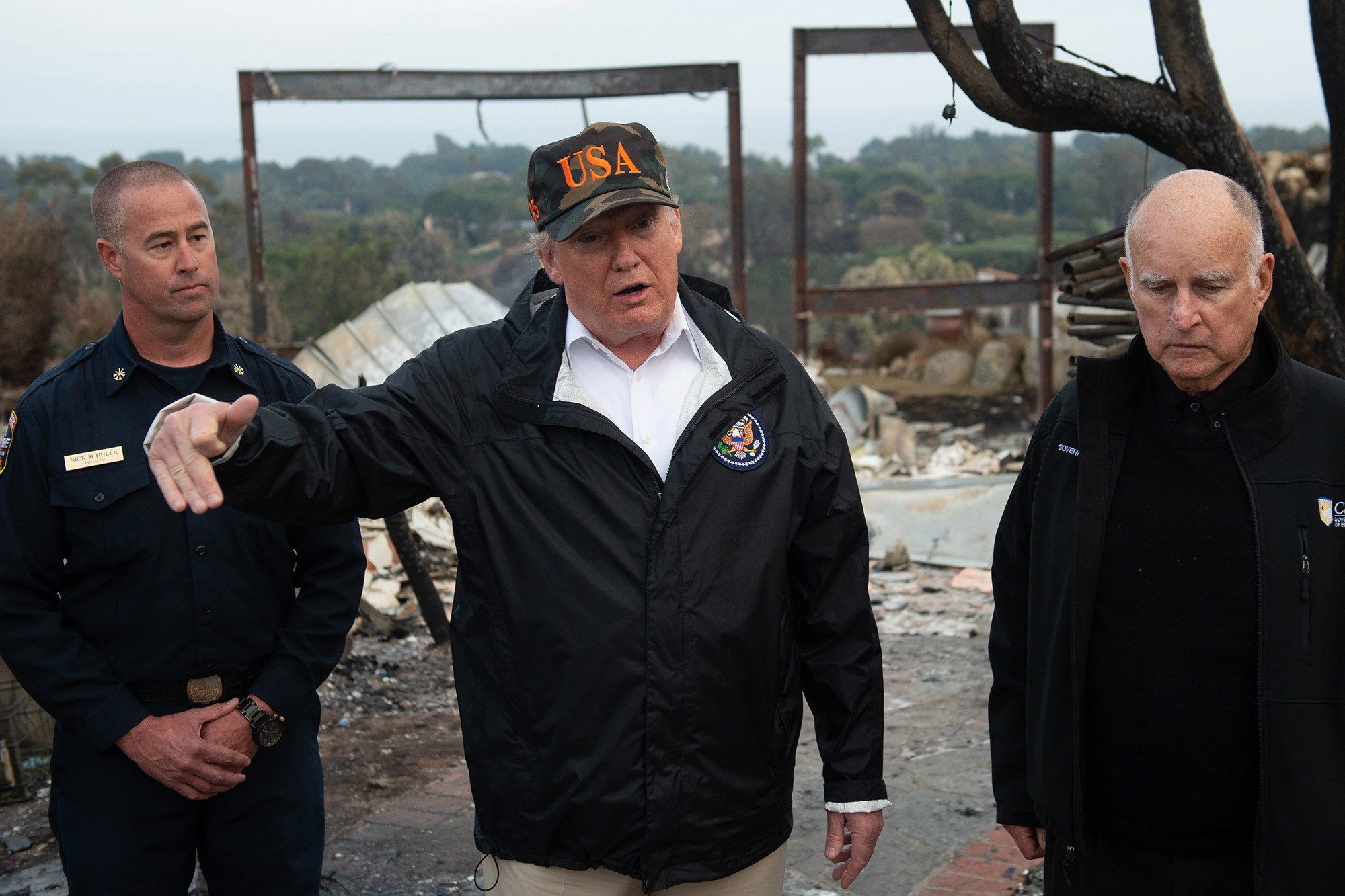He's exactly right.
Just ask California officials. Two months ago, the state legislature enacted a measure that would expedite the removal of dead trees and use "prescribed burns" to thin forests. In other words: the very same reforms that Trump is now being mocked for proposing. The September law followed a Gov. Jerry Brown executive order earlier this year that also called for "controlled fires" to improve forest health.
This scientific approach isn't easily conveyed in Trump's preferred mode of communication, the 280-character tweet. But University of California forest expert Yana Valachovic conceded in a Washington Post interview that Trump's "general sentiment is correct - that we need to manage fuels." That is, to get rid of dangerous buildups of dead and dying trees.
For a century, forest mismanagement has resulted in huge blazes. And while global warming is the favorite culprit among the PC crowd, history shows that California suffered far bigger fires decades ago. The death toll from the current northern California fire, known as Camp Fire, set the gruesome all-time state record for a single blaze, killing at least 79 so far, with hundreds still missing.
But that terrible death toll is mainly owing to the fact that population density on the forest's edge has expanded rapidly in recent years. In 1936, fires statewide burned nearly 800,000 acres, five times the size of Camp Fire. Fires in 1934, 1942, 1943, 1944, 1950 and 1963 also vastly exceeded Camp Fire's size.
The press repeatedly baits the president, asking him about global warming and trying to discredit him as a climate-change "denier."
To be sure, California's recent prolonged drought and record temperatures played a role in turning the state's forests into a tinderbox, and it is possible that climate change contributed to the high temperatures and drought. But debating that is an academic distraction from what must be done now.
And some scientists put significant blame for the fires on mistaken policies by state and federal forest agencies - things that could have been changed to avert the disaster and that still can be altered with more predictable results than trying to control the world's temperature.
The scale of the disaster demands immediate action. Camp Fire has already swept across over 230 square miles, reducing entire towns to soot. The fire, predicted to burn until Nov. 30, has put San Francisco and other cities under a pollution cloud worse than anything in India or China.
The University of California, Berkeley, canceled classes and is distributing masks.
Californians were warned of this impending inferno. Earlier this year, a bipartisan state panel, the Little Hoover Commission, reported that for more than a century, state and federal forest managers have mistakenly put out small fires instead of allowing them to burn naturally to rid woodlands of dense underbrush and deadwood. The Little Hoover panel condemned this "century of fire suppression."
In 2006, the Western Governors' Association warned about another contributing factor: failure to thin the forests. In the 1990s, President Bill Clinton imposed limits on timber harvesting to protect the spotted owl. Timber harvests fell by 80 percent, and new road building in federal forests ground to a halt. Too bad. Roads serve as natural fire barriers, and also enable fire fighters to get to the blazes.
Add to these mistakes the drought that gripped California beginning in 2012, the onslaught of tree-killing bark beetles and then record heat in 2017, and the result was an inferno waiting to happen. Not the first, by any means.
But the Little Hoover Commission predicts that "proactive forest management practices" can create healthier forests that will "check the speed and intensity of wildfires." These practices will return forests to the natural conditions of previous centuries, when forests had 40 trees per acre on average, instead of hundreds.
Yes, Trump's Twitter bombast doesn't capture every policy detail. But his basic point stands. Sadly, his liberal critics can't see the forest for the trees.
Betsy McCaughey is a senior fellow at the London Center for Policy Research.




Comment: Try an experiment: ask the sufferer of Trump Derangement Syndrome closest to you to tell you all the things Trump is right about, then observe their response. Chances are they won't be able to think of a single thing. The disagree with him on principle, even if they would've agreed with several of his statements or policies just a few years ago, and even if one of their heroes says the same thing now. The cognitive dissonance will be palpable. That is the strength of 'Orange Man Bad.'